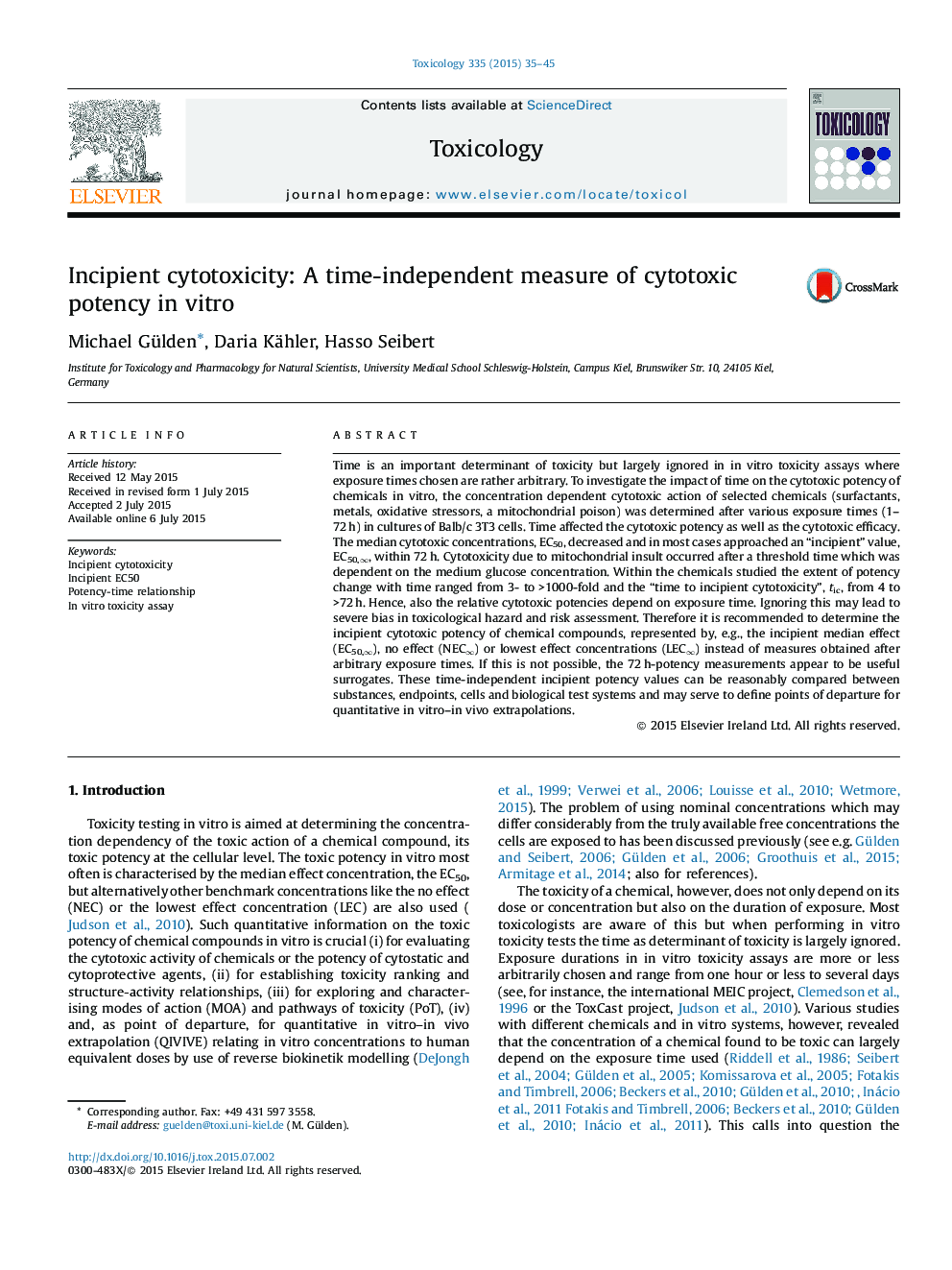| Article ID | Journal | Published Year | Pages | File Type |
|---|---|---|---|---|
| 5859008 | Toxicology | 2015 | 11 Pages |
Time is an important determinant of toxicity but largely ignored in in vitro toxicity assays where exposure times chosen are rather arbitrary. To investigate the impact of time on the cytotoxic potency of chemicals in vitro, the concentration dependent cytotoxic action of selected chemicals (surfactants, metals, oxidative stressors, a mitochondrial poison) was determined after various exposure times (1-72Â h) in cultures of Balb/c 3T3 cells. Time affected the cytotoxic potency as well as the cytotoxic efficacy. The median cytotoxic concentrations, EC50, decreased and in most cases approached an “incipient” value, EC50,â, within 72Â h. Cytotoxicity due to mitochondrial insult occurred after a threshold time which was dependent on the medium glucose concentration. Within the chemicals studied the extent of potency change with time ranged from 3- to >1000-fold and the “time to incipient cytotoxicity”, tic, from 4 to >72Â h. Hence, also the relative cytotoxic potencies depend on exposure time. Ignoring this may lead to severe bias in toxicological hazard and risk assessment. Therefore it is recommended to determine the incipient cytotoxic potency of chemical compounds, represented by, e.g., the incipient median effect (EC50,â), no effect (NECâ) or lowest effect concentrations (LECâ) instead of measures obtained after arbitrary exposure times. If this is not possible, the 72Â h-potency measurements appear to be useful surrogates. These time-independent incipient potency values can be reasonably compared between substances, endpoints, cells and biological test systems and may serve to define points of departure for quantitative in vitro-in vivo extrapolations.
